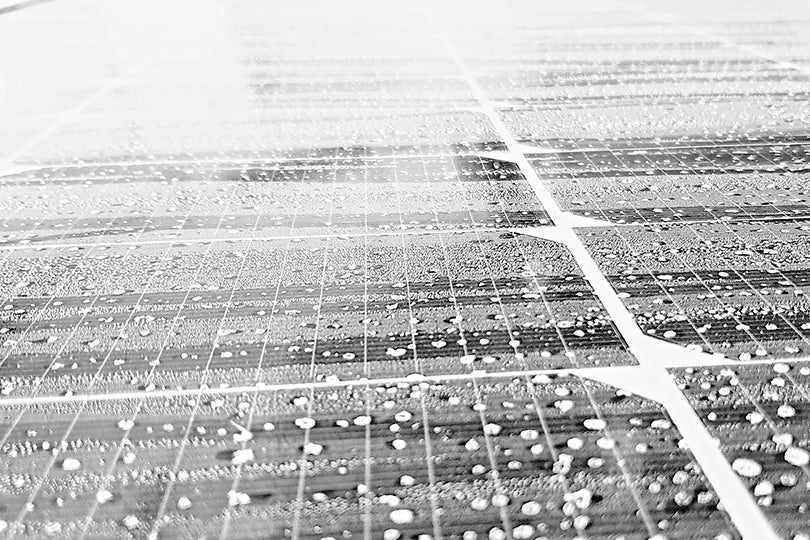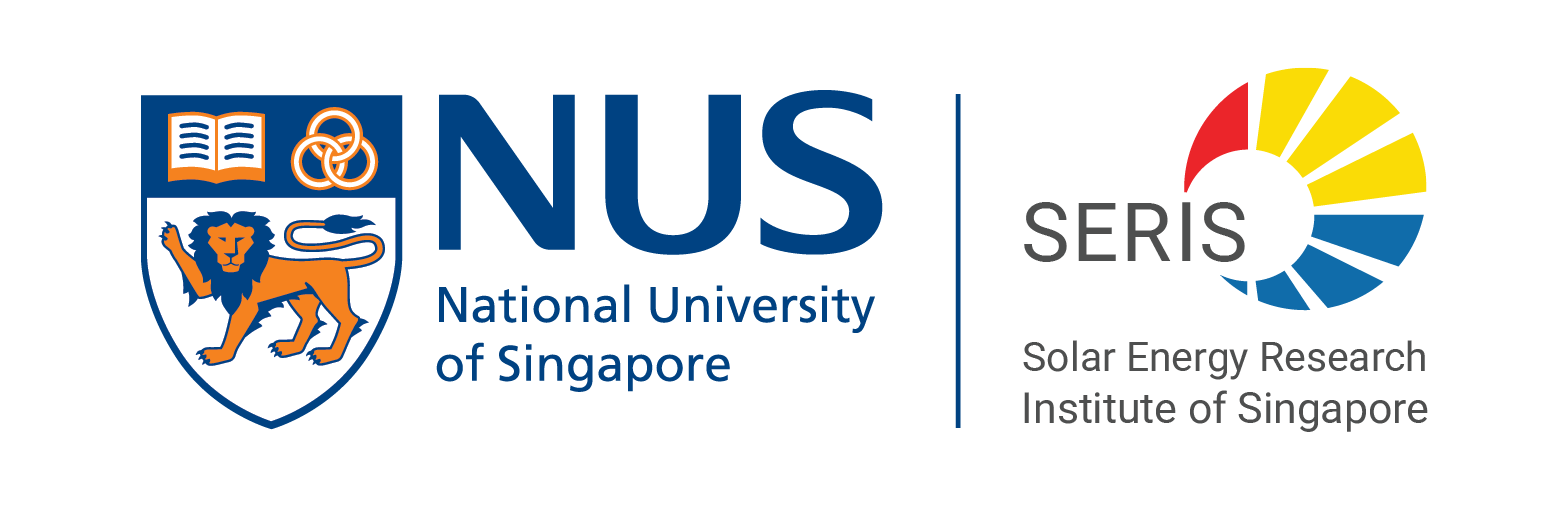The PV Module Characterisation & Reliability (PVMC&R) Group at SERIS offers testing of PV modules to the PV industry. It also collaborates in research projects, offering high-accuracy characterisation and consultancy on PV module reliability. The Laboratory is accredited since 2012 to ISO/IEC 17025 for the electrical testing of PV modules. Over time, the Laboratory expanded its accreditation to reliability and safety tests, with special focus on the degradation modes that occur in the hot and humid tropical climate of South-East Asia. In 2021 the Laboratory further expanded its accreditation to potential induced degradation, and the classification of solar simulators. In 2024, the laboratory added the measurement of bifacial modules according to IEC TS 60904-1-2 Edition 1.0 to its scope to meet the increasing demand from industry to measure and characterise such modules. The Laboratory has established collaborations with local and international PV test centres and module manufacturers, being the reference centre for PV module characterisation and reliability for Singapore and the region.
Equipment available in the accredited laboratory
The Laboratory has high-level instrumentation that makes it one of the best-equipped test laboratories in the world for PV module testing, and the top module testing laboratory in South-East Asia.
Solar simulator classification
Our laboratory offers on-site classification of solar simulators in the region, according to the newest edition of IEC 60904-9, including spectral match classification in the extended range from 300 to 1200 nm.
The classification of solar simulators is performed by assigning a rating that ranges from class CCC to class A+A+A+ for the following characteristics: spectral match (including AM1.5 Spectral Coverage and AM1.5 Spectral Deviation; SPC and SPD, respectively), spatial uniformity, and temporal stability.
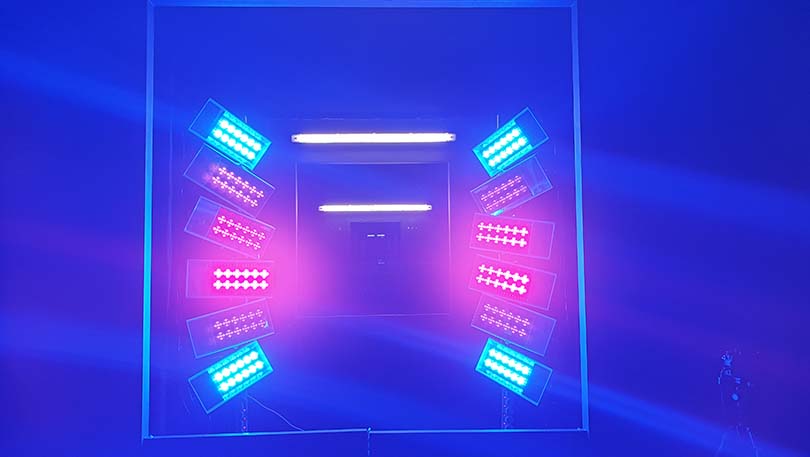
PV module characterisation
Electrical characterisation of PV modules is performed in our laboratory on two of the best solar simulators in the market:
- a 10-ms pulse Pasan SunSim 3B by Meyer Burger;
- a 100-ms ModuleTest3 solar simulator by h.a.l.m. for slow-response high-capacity modules.
“Golden module” certificates can be produced by combining the results from both simulators, giving the world-class uncertainty of ± 1.4% for the module’s measured maximum power.
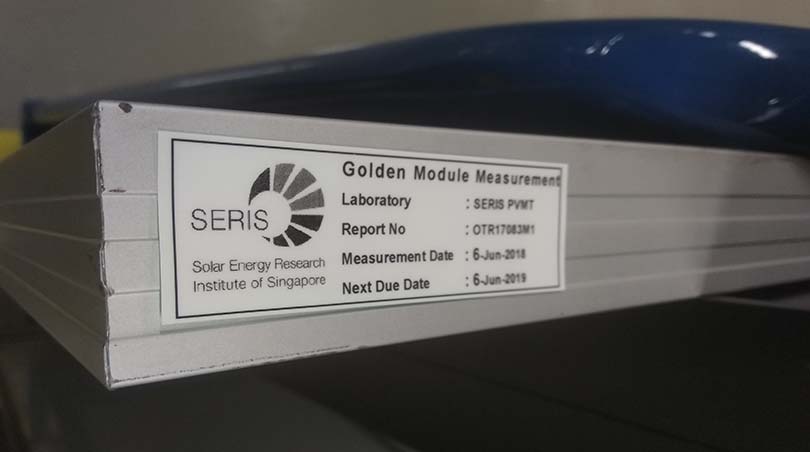
The laboratory is fully equipped to assess the optical characteristics of the module under test for both spectral responsivity measurements and spectral mismatch correction, providing best-in-class precision in the electrical measurements.
The spectral irradiance of the solar simulators is routinely monitored with fast-response spectrometers, capable to measure in the 200 - 1700 nm spectral range.
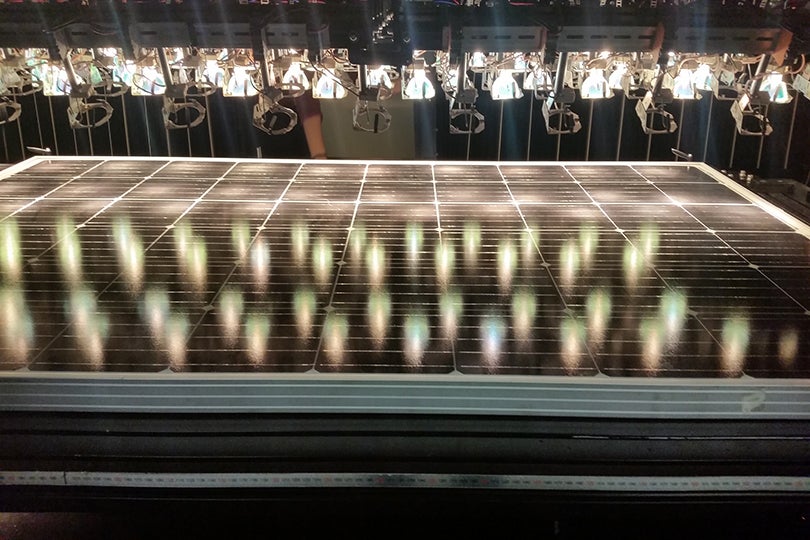
The level of irradiance that a PV module receives varies with the Sun’s position in the sky throughout the day and over the seasons. It is therefore important to analyse the impact of the angle of incidence on the output of PV modules and determine a correction factor, commonly referred to as the Incident Angle Modifier (IAM). Our Laboratory is equipped with a novel experimental setup to analyse the Incident Angle Modifier (IAM) at full-size commercial module level. The method has been included in the draft of an update to IEC 61853-2 which is expected to be adopted in early 2025.
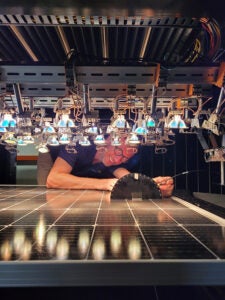
PV module reliability and durability testing
Module stabilisation against Light Induced Degradation (LID) can be done outdoors with natural light but also indoors in our continuous solar simulator for time efficiency. Additionally, our solar simulator allows us to perform hot-spot and module operating temperature tests in steady and controlled conditions.
These tests are important to assess the durability and long-term reliability of PV modules.
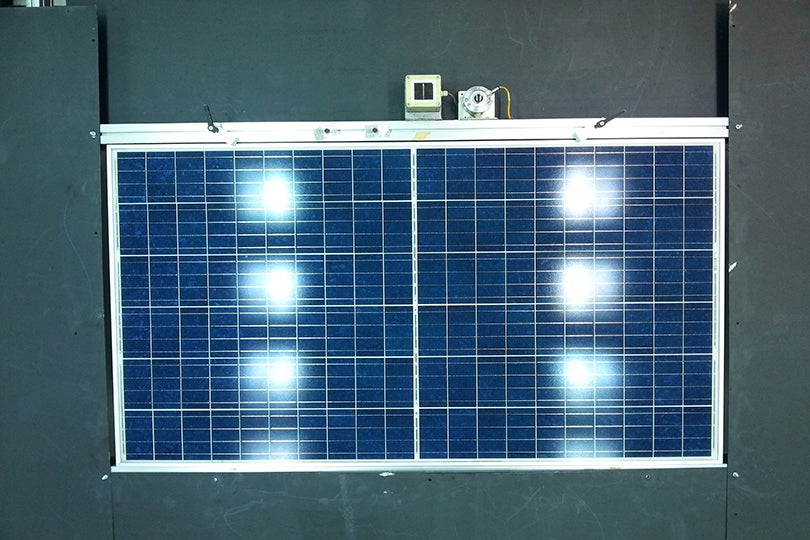
The UV pre-conditioning test is an ageing test that aims at identifying any susceptibility to UV degradation.
The PV module is irradiated with UV light, accelerating the outdoor UV exposure by a factor of 5 to 10 (depending on the considered location). In a typical test flow, the tested module is then checked against damages (visual inspection, insulation, and electrical characterisation if required).
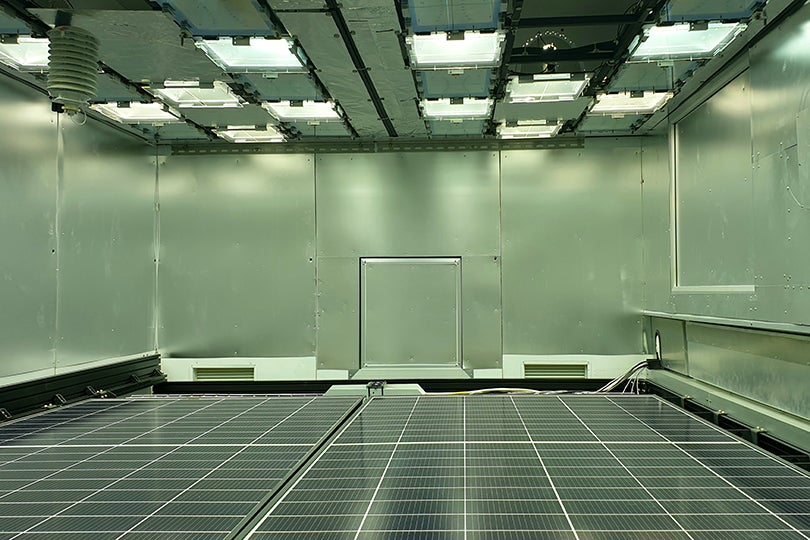
Examples:
“Insulation Test” (Dry)
Designed to assess module electrical insulation between active parts and accessible parts. A high voltage is applied to the module and the insulation resistance is measured.
“Wet Leakage Test”
The test is carried out in a similar way as for the insulation test, except that the module under test is immersed in a water solution of given resistivity. This is particularly relevant for PV modules in tropical or equatorial climates.
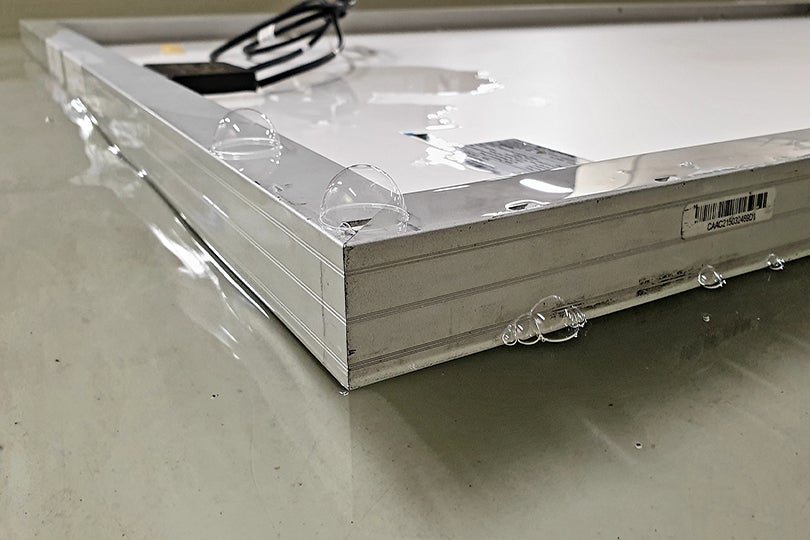
Mechanical stress tests
There are various tests to assess the mechanical stability and durability of PV modules:
“Mechanical Load Test” (MLT) to simulate for extreme weather stress conditions (e.g., heavy winds, snow): a static load of up to 5400 Pa is chosen for a certain duration.
“Dynamic Load Test” (DLT) uses lighter loads but is repeated 1000 times. This simulates storms and repeated wind gusts.
“Hail test”, for which a projectile (ice ball) is shot at the modules with speeds of up to 30 m/s.
“Junction box and Connectors Test” is used to assess the strength and assembly quality of the modules.
“Module breakage Test” aims to ensure safe operations when replacing a broken module. It entails a bag filled with steel balls to ‘pendulum swing’ onto a module from a known height.
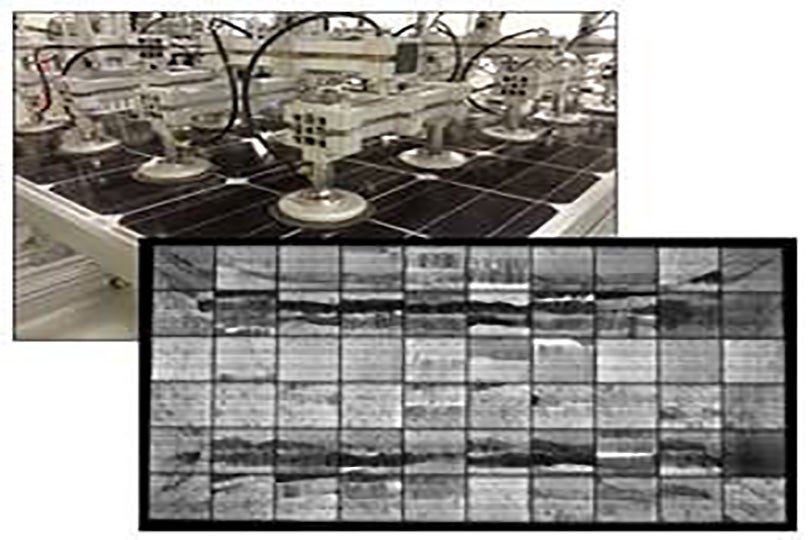
Climate chambers are the workhorses in reliability and durability testing of PV modules. Tests such as damp heat, thermal cycling, humidity-freeze, hot and cold conditioning with PID options require the use of such equipment to vary the temperature and humidity in a controlled way over a wide range of conditions. The Laboratory is also equipped to perform the prenormative Light and Elevated Temperature Induced Degradation (LeTID) test, a novel degradation mechanism that may slowly deteriorate PV module performance in hot climates.
Given the PV industry trend to larger modules, the Laboratory’s climate chambers were upgraded in 2022 to larger volumes, now capable of testing modules up to 3 m long and 2 m wide.
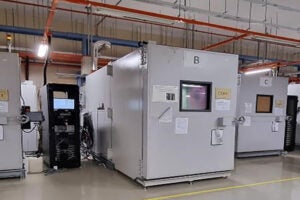
Extended reliability for tropical regions
The location in the tropics makes SERIS’ testing laboratory an ideal place for conducting extended PV module stress tests relevant to South-East Asia. Specifically designed PV module tests include:
- Accelerated ageing tests with extended durations or toughened test conditions
- Comparative indoor and outdoor potential induced degradation (PID) testing
- Seven different salt mist corrosion tests
- Hot-spot identification due to soiling
- Acid rain impact to the modules
- Assessing degradation of the encapsulants
Customised mechanical load testing for modules in floating PV applications
